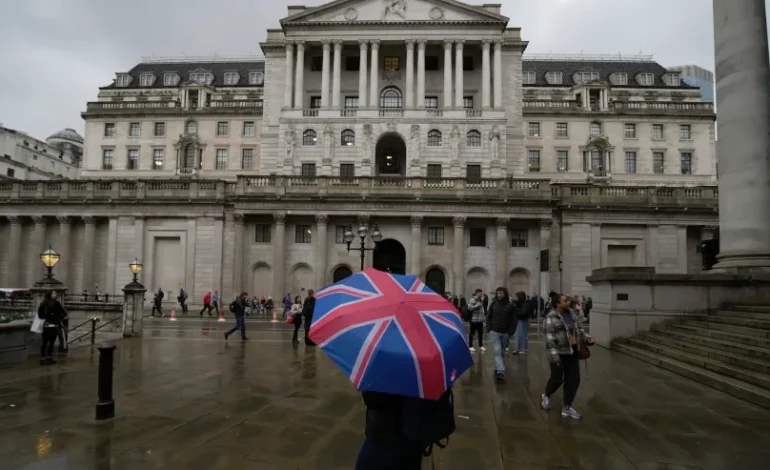The Bank of England (BoE) is anticipated to announce a quarter-point interest rate cut this Thursday, reducing the lending rate from 4.75% to 4.5%, the lowest level since June 2023.
This decision comes as policymakers contend with a slowing economy and lingering inflationary pressures.
Analysts expect the BoE’s monetary policy committee (MPC) to downgrade its growth forecasts, projecting a decrease in GDP growth for 2025 from 1.5% to around 1%. This anticipated revision underscores the economic risks facing Chancellor Rachel Reeves’ budgetary plans.
James Smith of ING noted that the weaker forecast would “shine a light on the Office for Budget Responsibility (OBR),” which assesses the government’s fiscal policies. The OBR’s updated growth projection, expected to be published on March 26, will play a crucial role in determining whether Reeves will need to adjust her fiscal targets.
If the new figures indicate that Reeves may breach her self-imposed fiscal rules, analysts predict she could announce spending cuts when addressing Members of Parliament. Reeves has emphasized the importance of adhering to these fiscal targets, with the chief secretary to the Treasury, Darren Jones, calling them “non-negotiable.”
While Thursday’s rate reduction is expected to be the first of several cuts throughout the year, economists suggest the BoE will adopt a cautious approach. Simon French, chief economist at Panmure Liberum, anticipates up to six rate reductions in 2025, though he predicts a faster pace will only occur once political uncertainty subsides.
The Bank has been carefully monitoring inflation, which stood at 2.5% in December, slightly above its target of 2%. Although the recent dip was driven by easing price pressures in the services sector, economists at Citi warned that inflation could rise again due to higher energy prices and accelerating wage growth.
The decision to lower rates comes as the UK economy grapples with stagnation. Matt Swannell, chief economic advisor to the EY ITEM Club, explained that the BoE faces a dilemma, as near-term inflation may rise even as long-term growth projections weaken.
Despite concerns over price pressures, investors are pricing in at least three additional rate cuts by the end of 2025. Lower borrowing costs are expected to alleviate pressures on businesses and households, though Simon Pittaway of the Resolution Foundation cautioned that a single quarter-point cut is unlikely to significantly boost confidence.
Governor Andrew Bailey and other senior officials are set to provide detailed economic projections and policy explanations at a press conference following Thursday’s decision. As the BoE continues to navigate the delicate balance between stimulating economic growth and curbing inflation, financial markets will be closely watching for signals on future monetary policy changes.
In the meantime, Prime Minister Keir Starmer’s government faces mounting pressure to address economic stagnation and rising borrowing costs, with further tax or spending adjustments likely on the horizon.
The Guardian, Reuters, and the Hill contributed to this report.










The latest news in your social feeds
Subscribe to our social media platforms to stay tuned